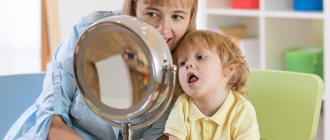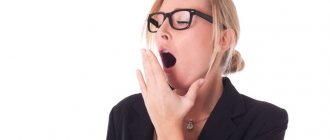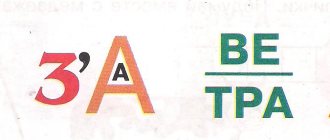The development of speech is a complex process; a child must learn to correctly form and pronounce thoughts, exercise control over the organs of the speech apparatus, understand messages addressed to him and be able to respond to his interlocutor.
Your child may have difficulty with some of these tasks. It is the science of speech therapy that deals with solving problems related to speech, as well as preventing their occurrence.
Basics of speech therapy
Speech therapy is a science that studies defects in speech development and the causes of their occurrence. Engaged in finding ways to eliminate and identify violations in the early and late stages of education through special training and corrective methods.
The goal of
speech therapy is to develop new ways to solve problems associated with incorrect speech production.
The object of
speech therapy is persons with deviations in speech abilities.
Except for those in whom it is associated with physiological deficiencies. The subject of speech therapy
How science are speech impediments. This includes a learning process and developing a remedial program for each individual individually.
When did the direction originate?
The history of speech therapy does not have an exact date of origin, but goes back several thousand years. We can distinguish four stages in the development of this direction (independent today) of correctional pedagogy. As the industry's development trend demonstrates, it was formed on the basis of knowledge acquired by medicine and pedagogy, and therefore has a direct connection with them.
Scientific knowledge of speech disorders and the discovery of methods for their correction began not so long ago, when medicine became aware of the basic mechanisms of the anatomical and physiological aspects, thanks to which a person is able to carry out speech activity. Around the middle of the 19th century, the first notes appeared on the theory of speech disorders, the author of which was the neuropathologist P. Brock. A little later, another neurologist, K. Wernicke, published his scientific work describing the center of the sensory side of speech capabilities.
We recommend: Stuttering: causes and treatment
Both of these works gave rise to much controversy and debate regarding the mechanisms that support the speech system. It is worth noting that this scientific conflict has become an excellent pretext for collecting new data and knowledge about possible disorders of human speech activity.
In this regard, the results of studies of speech disorders gradually began to appear, which were carried out for experimental purposes not only by neurologists, but also by linguists, psychologists, physiologists, teachers and other specialists.
Thus, speech therapy as a science arose gradually, against the backdrop of the development and improvement of other sciences. And now, being an independent branch of correctional pedagogy, speech therapy is not isolated from other areas. Moreover, it closely interacts with other areas of scientific knowledge of individuals.
In the vastness of Russia, a breakthrough in the development of speech therapy was the event when the state decided to provide assistance to children with speech disorders. In the not-so-distant year 1917, special decrees were issued on the need to include preschool and school institutions (including private ones) in the general education system of the Soviet people.
We recommend: Science defectology
Leading Soviet authorities were involved in the coordination of these documents. Thanks to these decrees, which encouraged the government to take a closer look at the issue of providing assistance to children with speech defects (including abnormal ones), fundamental changes were laid in the field of organizing educational and training processes.
History of origin
The first mention of the correction of speech abilities appeared in the 17th century. The deaf pedagogy of that time did not take into account people who were hard of hearing or were completely deaf.
Speech therapy emerged as an independent discipline towards the end of the 19th century. Until the first half of the 20th century, science was in a simplified form. Speech defects were considered as signs of insufficient formation or disorder in the functioning of the articulatory apparatus. Diagnostic measures were carried out from a medical point of view.
After a series of research works, the scientific direction of speech therapy received a broader meaning. They began to connect her directly with pedagogy.
Modern speech therapy has the same general principles as defectology. You can find out more about defectology here. In addition, it is closely related to other sciences (psychology, linguistics, physiology).
The concepts of ZRR and ONR in speech therapy
Delayed speech development
, is typical for children under 4 years of age. The level of development of the speech abilities of a child with this diagnosis is noticeably behind his peers. With timely contact with a speech therapist, the deviation is successfully eliminated.
OSD – general speech underdevelopment.
The concept includes versatile pathologies in the child’s speech development (lexical, grammatical, phonetic and other errors in the pronunciation and formulation of words and sentences).
ONR can be observed with alalia, dysarthyria, etc. In speech therapy, ONR is divided into 4 levels, which are determined by the degree of deviations from the norm. Presented in the table:
| OHP levels | Characteristic |
| Level 1 |
|
| Level 2 |
|
| Level 3 |
|
| Level 4 |
|
Expert opinion
Margarita Sergeevna S.
Speech pathologist and speech pathologist with 15 years of experience working in various speech correction centers with children of different ages.
The presented division is necessary for a speech therapist to make a correct diagnosis and subsequent treatment.
Basic Concepts
Disorders of speech activity, which speech therapy deals with, are considered to be deviations in the functioning of the muscles of the speech apparatus, disturbances in the pronunciation of sounds or intonation, underdevelopment of speech, pathological development against the background of diseases and other anomalies.
Such defects are studied and determined by specialists in various scientific fields. In the course of studying speech defects, each deviation is considered in accordance with the goals, objectives and methods of each scientific area.
The meaning of speech therapy in this case is the study of the disorder with the aim of preventing it, as well as eliminating it with the help of special programs of correctional education or training. Therefore, speech therapy is considered a branch of special pedagogy. Its structure today is:
- Preschool and school speech therapy.
- Speech therapy for teenage children.
- Speech therapy for adults.
The theoretical foundations of speech therapy make it possible to study the etiology of speech disorders using the evolutionary-dynamic method in combination with the principle of unity of dialectical, biological and social aspects of the development of the speech apparatus.
Based on this, the tasks of speech therapy are determined:
- Study of individual speech characteristics for each form of speech deviation.
- Identification of symptoms, nature of development and degree of deviation of speech activity.
- Determination of development trends in children with speech disorders.
- Identification of the connection between speech disorders and the formation of mental, physical health and personality development.
- Study of the formation of the speech apparatus in children with various developmental defects and the presence of speech deviations.
- Identification of the nature of the occurrence of the disorder, its mechanism of action, accompanying symptoms, as well as structure.
- Development of pedagogical and other methods of knowledge of speech disorders.
- Systematization of acquired practical and theoretical knowledge to create a basis for improving methods for studying speech defects.
- Development of new methods, techniques and principles to prevent and eliminate violations.
- Formulating and raising new, topical issues related to the organization of programs to provide appropriate assistance to people with speech disorders.
The tasks of this scientific direction presented above consider speech disorders from the point of view of:
- Theories - the study of speech disorders in order to be able to develop new methods for prevention, identifying propensities for deviations and overcoming them.
- Practices - the use of preventive measures, methods to identify and eliminate deviations in the speech apparatus.
As you can see, the theoretical side and practical experience of speech therapy are closely related, which allows for a comprehensive scientific approach to solving the problems of diction defects.
Carrying out its direct scientific activities, this branch is based on the basic principles of speech therapy:
1. Systematic principle – considers speech as a unique system with its own complex structure, the components of which are studied separately to obtain an overall picture of the capabilities and structure of the speech apparatus.
2. The principle of complexity – takes into account the patterns and specific features of the development of individuals if they have speech defects.
We recommend: Dyslexia is
3. The principle of development - when carrying out correctional and speech therapy activities, it involves determining the main stages, tasks and identifying complications associated with the immediate environment of the person.
4. The principle of considering speech disorders against the background of the individual’s mental state and its aspects.
5. The principle of the activity approach - for organizing a speech therapy program for raising or training a child with diction disorders, the leading one is his direct activity (games, training, practice).
6. The principle of orthogenetic features.
7. Etiopathogenetic and symptomatic principle.
8. A principle that takes into account the structure of diction defects.
9. The principle of a workaround – considers the possibility of forming a new principle for the functioning of speech “bypassing” the component, which is a violation.
10. General didactic principles.
It is worth noting that the basis of the scientific method is speech therapy principles, general didactic, as well as special (principles of development, systematization of techniques and interconnectedness). They are a practical reinforcement of the theory of R.E. Levina regarding an integrated approach to the implementation of speech therapy activities, which takes into account the characteristics of the individual (in the motor, sensory, volitional and emotional spheres).
Exercises for correcting defects in speech therapy
Classes with a speech therapist are aimed at developing the child’s articulatory apparatus and respiratory system.
Respiratory exercises teach you to breathe correctly through your nose and mouth, and also train you to hold your breath for a few seconds.
So that the activities do not tire the children, they are performed in a playful way. For example, the game "Ships". Its essence is that the child blows air on the boat, which is in the water, pushing it towards the edge of the container. There are a huge number of such games in speech therapy.
Gymnastics of the articulatory apparatus consists of the following:
- warming up the lower jaw;
- warming up the cheeks;
- warming up the lips;
- tongue exercise
; - charging for the sky.
Exercises are carried out in poetic form using facial expressions. Focusing on which sounds come first and the correct stress in words.






